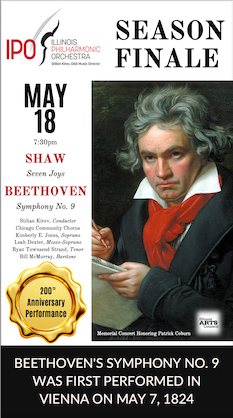Two fine fiddlers spark Bella Voce Sinfonia’s belated spotlight debut

A spring thaw may be coming to Chicago at last.
A winter of sad and uneasy news in the classical music world was appended with the announcement that Third Coast Baroque, whose inquisitive and spirited programs marked a welcome addition to Chicago’s array of early-music offerings, had disbanded.
But those wringing hands over the state of the city’s Baroque music scene can take heart. Several Third Coast members hold dual membership with the Bella Voce Sinfonia, whose performance on Saturday at Ganz Hall provides some assurance that the early music tradition remains in good hands.
Following up a string of memorable performances of late, including a standout slate of yuletide programs, the Bella Voce chorus yielded the floor to the Bella Voce Sinfonia, the group’s resident 15-member period-instrument ensemble, for its “String Equinox” program. Since it was officially incorporated in 2018, the Sinfonia has furnished accompaniment to standout performances in recent seasons of Bach’s B Minor Mass and Handel’s Messiah, among others.
Saturday’s performance at Ganz Hall marked the instrumental ensemble’s overdue solo debut, which served up a fine menu of Baroque masterworks that showcased the players’ collective and individual virtuosity.
The program’s equinoctial theme provided a thoughtful frame in two ways: in drawing a midline between the opposing forces of summer and winter, it illustrated the dueling factions of the concerti grossi that constituted the evening’s first half. And the idea of in-between-ness alluded to the way that many of the program’s works attempt to subvert the model of a conventional concerto.
Violinists Martin Davids, the Sinfonia’s concertmaster, and guest soloist Edwin Huizinga embodied these forces in a pair of concerti grossi by Handel and Corelli to open the program. Each musician defined his character wholly in body and sound; Davids led with sweetness and determined poise, where Huizinga delivered lines with a penetrating eloquence.
With Bella Voce artistic director Andrew Lewis at the helm, the ensemble launched into the first movement of Handel’s G major concerto, Op. 6, no. 1, HWV 319, at an energized yet sensible pace to open the program. From the jump, the players were beautifully coordinated in tempo and fervor, their camaraderie brought to life by Huizinga. A compelling presence, due to his dynamic stage presence as well as his towering height, Huizinga would often engage the other string players with close eye contact in moments of interplay across the ensemble.
Corelli’s Op. 6, no. 5 in B-flat major, was less rhythmically focused at the outset, but was lifted by Lewis’ keen control of ensemble dynamic and balance that illuminated the opening movement’s classic form.
Though it was ostensibly billed as the pre-intermission high point, Telemann’s D major Concerto for violin, cello, and trumpet, TWV 53:D5, met with a more uneven performance. A pared-down, conductor-less instrumentation traded Lewis for trumpeter Ryan Berdnt, whose sensitive ear for blending and elegant lines brightened the ensemble’s sonority with a citrusy finish.
The work’s most sublime moment came midway through the Adagio, when the supporting string ensemble fell away and the trio of Davids, cellist Anna Steinhoff and harpsichordist Jason Moy conferred for a breathless, recitative-like invocation.
The closing Allegro stepped off confidently with breezy tempo. Davids was again in splendid form, setting loose a spiraling, uninterrupted helix of sixteenth notes through a broad stretch of the movement, which he dispatched with a distance runner’s athleticism. Berdnt, on the other hand, wobbled in the finale’s fiendishly difficult trumpet part, which made for an uneasy landing in the final ritornello.
With Lewis back on the podium, the program’s second half led off with an assured rendition of Purcell’s Abdelazer Suite. The Overture moved along at a casual pace, and even the famous Rondeau, with all its sonic heft, was dispatched handily yet without great portent.
These seemed a mere pretense to the suite’s latter dance movements, wherein the ensemble really took flight, particularly the sixth-movement Air, which was intensified by a fiery tempo, and a schmaltzy reading of the Jig that was further lifted by exquisitely shaded dynamic contrasts between sections.
Davids and Huizinga returned to center stage to close out the evening with a true masterwork of the form, Bach’s Concerto for Two Violins in D minor, BWV 1043. The two violinists led their concertino teams with panache, trading lunges and ripostes both musically and literally in a bout of musical fencing.
By contrast, the slow movement allowed each soloist to show his tender side, steering the ensemble in the overlapping passagework with the steady, gentle hand of a shepherd guiding his flock.
The rest of the musicians animated Bach’s finely tooled counterpoint with diligent, propulsive rhythm. Even without the aid of a conductor, the ensemble sounded both huge and exquisitely balanced, a cosmic dance that thrummed like the music of the spheres.
The program will be repeated 4 p.m. Sunday at St. Luke’s Episcopal Church in Evanston. bellavoce.org
Posted in Performances





